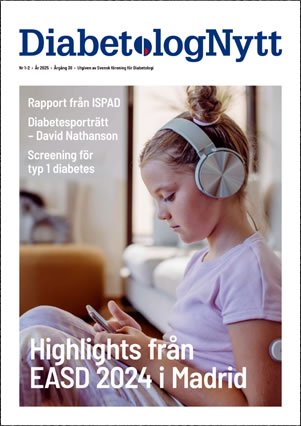
Action Points
- In patients with impaired glucose tolerance, randomization to intensive lifestyle change or metformin versus placebo had favorable effects on lipoprotein subfractions, a study found.
- There were also significant changes in adiponectin as well as body mass index.
Both metformin and changes in diet and exercise made significant changes to the size and types of lipid particles in patients with impaired glucose tolerance, researchers found.
In a subgroup analysis of the Diabetes Prevention Program, patients who were randomized to either metformin or to an intense lifestyle intervention had lower levels of various particles of low-density lipoprotein (LDL) cholesterol, and increases in high-density lipoprotein (HDL) particles (P<0.01), Ronald Goldberg, MD, of the University of Miami, and colleagues reported online in the Journal of Clinical Endocrinology & Metabolism.
”Our findings demonstrate that the same therapies used to slow the onset of diabetes also may help allay the risk of heart disease,” Goldberg said in a statement.
Earlier research from the Diabetes Prevention Program has shown that intensive lifestyle changes and metformin both reduce diabetes incidence in patients with impaired glucose tolerance. Both treatments have also been shown to modify lipid profiles in this group of patients.
However, their effects on lipoprotein subfractions — the size and types of particles that carry various types of cholesterol — have not been studied.
For their analysis, Goldberg and colleagues looked at data on 1,645 patients in the study who had been randomized to one of three groups: placebo, metformin 850 mg twice daily, or a lifestyle intervention aimed at 7% weight loss using a low-fat diet and at least 150 minutes of physical activity per week.
They measured lipoprotein subfraction size, density, and concentration via nuclear magnetic resonance and density gradient ultracentrifugation at baseline and at 1 year.
Using both of these techniques together ”provides an uncommon opportunity to corroborate the findings with the two methods and to contribute complementary size and density information on VLDL [very-low-density lipoprotein] and LDL subfraction changes,” they wrote.
At baseline, there were no differences between the groups in terms of clinical and metabolic parameters, but at 1 year, patients who were in either of the interventions had significant improvements in glycemia, HOMA-IR, adiponectin, physical activity, saturated fat intake, and other metabolic parameters.
Over one year, the researchers found that both of these interventions led to improvements in lipoprotein subfractions, though changes in diet and exercise appeared to have a more powerful impact.
Specifically, the lifestyle intervention decreased large and buoyant VLDL, small and dense LDL, and small HDL, and raised large HDL (P<0.01 for all), while metformin modestly reduced small and dense LDL and raised small and large HDL (P<0.01), the researchers reported.
For the lifestyle intervention, changes in insulin resistance largely accounted for decreases in large VLDL, while changes in body mass index (BMI) and adiponectin were related to changes in LDL, Goldberg and colleagues wrote.
Adiponectin was also related to changes in large HDL, and BMI was tied to changes in small HDL, they added.
On the other hand, metformin’s effects on small HDL were independent of adiponectin, BMI, and insulin resistance, the researchers wrote.
They added that the mechanisms behind the improvements are not completely understood, but they considered several explanations.
For instance, the overproduction of large, buoyant VLDL particles is believed to be a ”primary abnormality in insulin-resistant states,” they wrote, and studies have shown that weight reduction reverses these abnormalities.
Also, a decline in small dense LDL likely reflects reduced triglyceride-cholesterol ester exchange, favoring the formation of larger buoyant LDL that may be less atherogenic, they said.
They concluded that their findings suggest that interventions to slow the development of diabetes may also slow the progression of atherosclerosis, ultimately diminishing heart disease in this population.
Primary source: Journal of Clinical Endocrinology & Metabolism
Source reference: Goldberg R, et al ”Lifestyle and metformin treatment favorably influence lipoprotein subfraction distribution in the Diabetes Prevention Program” J Clin Endocrinol Metab 2013.
From http://www.medpagetoday.com
Abstract
- Article
Lifestyle and Metformin Treatment Favorably Influence Lipoprotein Subfraction Distribution in the Diabetes Prevention Program
- R. Goldberg,
- M. Temprosa,
- J. Otvos,
- J. Brunzell,
- S. Marcovina,
- K. Mather,
- R. Arakaki,
- K. Watson,
- E. Horton and
- E. Barrett-Connor
– Author Affiliations
Leonard M. Miller School of Medicine (R.G.), University of Miami, Miami, Florida 33101-6960; The Biostatistics Center (M.T.), The George Washington University, Rockville, Maryland 20852; LipoScience, Inc (J.O.), Raleigh North Carolina 27616; University of Washington School of Medicine (J.B.), Seattle, Washington 98195; NW Lipid Research Labs (S.M.), University of Washington, Seattle, Washington 98108; Indiana University School of Medicine (K.M.), Indianapolis, Indiana 46202; University of Hawaii (R.A.), Honolulu, Hawaii 96822; University of California, Los Angeles (K.W.), Alhambra, California 90095; Joslin Diabetes Center (E.H.), Boston, Massachusetts 02215; and University of California, San Diego (E.B.-C.), San Diego, California 92161
- Address all correspondence and requests for reprints to: R. Goldberg, MD, c/o The Diabetes Prevention Program Coordinating Center, Biostatistics Center, George Washington University, 6110 Executive Boulevard, Suite 750, Rockville, Maryland 20852. E-mail: dppmail@biostat.bsc.gwu.edu.
Abstract
Context: Although intensive lifestyle change (ILS) and metformin reduce diabetes incidence in subjects with impaired glucose tolerance (IGT), their effects on lipoprotein subfractions have not been studied.
Objective: The objective of the study was to characterize the effects of ILS and metformin vs placebo interventions on lipoprotein subfractions in the Diabetes Prevention Program.
Design: This was a randomized clinical trial, testing the effects of ILS, metformin, and placebo on diabetes development in subjects with IGT.
Participants: Selected individuals with IGT randomized in the Diabetes Prevention Program participated in the study.
Interventions: Interventions included randomization to metformin 850 mg or placebo twice daily or ILS aimed at a 7% weight loss using a low-fat diet with increased physical activity.
Main Outcome Measures: Lipoprotein subfraction size, density, and concentration measured by magnetic resonance and density gradient ultracentrifugation at baseline and 1 year were measured.
Results: ILS decreased large and buoyant very low-density lipoprotein, small and dense low-density lipoprotein (LDL), and small high-density lipoprotein (HDL) and raised large HDL. Metformin modestly reduced small and dense LDL and raised small and large HDL. Change in insulin resistance largely accounted for the intervention-associated decreases in large very low-density lipoprotein, whereas changes in body mass index (BMI) and adiponectin were strongly associated with changes in LDL. Baseline and a change in adiponectin were related to change in large HDL, and BMI change associated with small HDL change. The effect of metformin to increase small HDL was independent of adiponectin, BMI, and insulin resistance.
Conclusion: ILS and metformin treatment have favorable effects on lipoprotein subfractions that are primarily mediated by intervention-related changes in insulin resistance, BMI, and adiponectin. Interventions that slow the development of diabetes may also retard the progression of atherosclerosis.
Nyhetsinfo
wwwred DiabetologNytt





